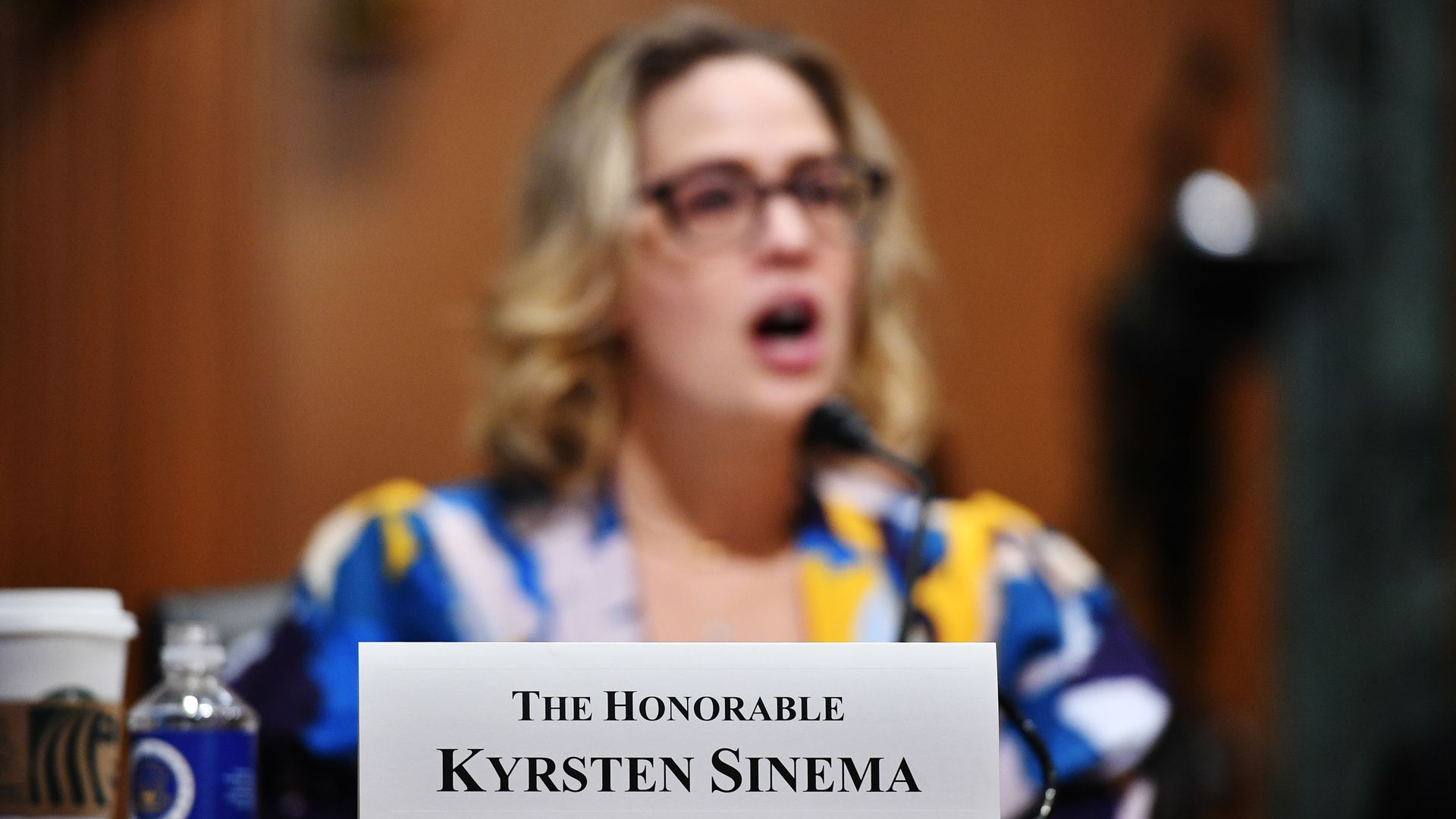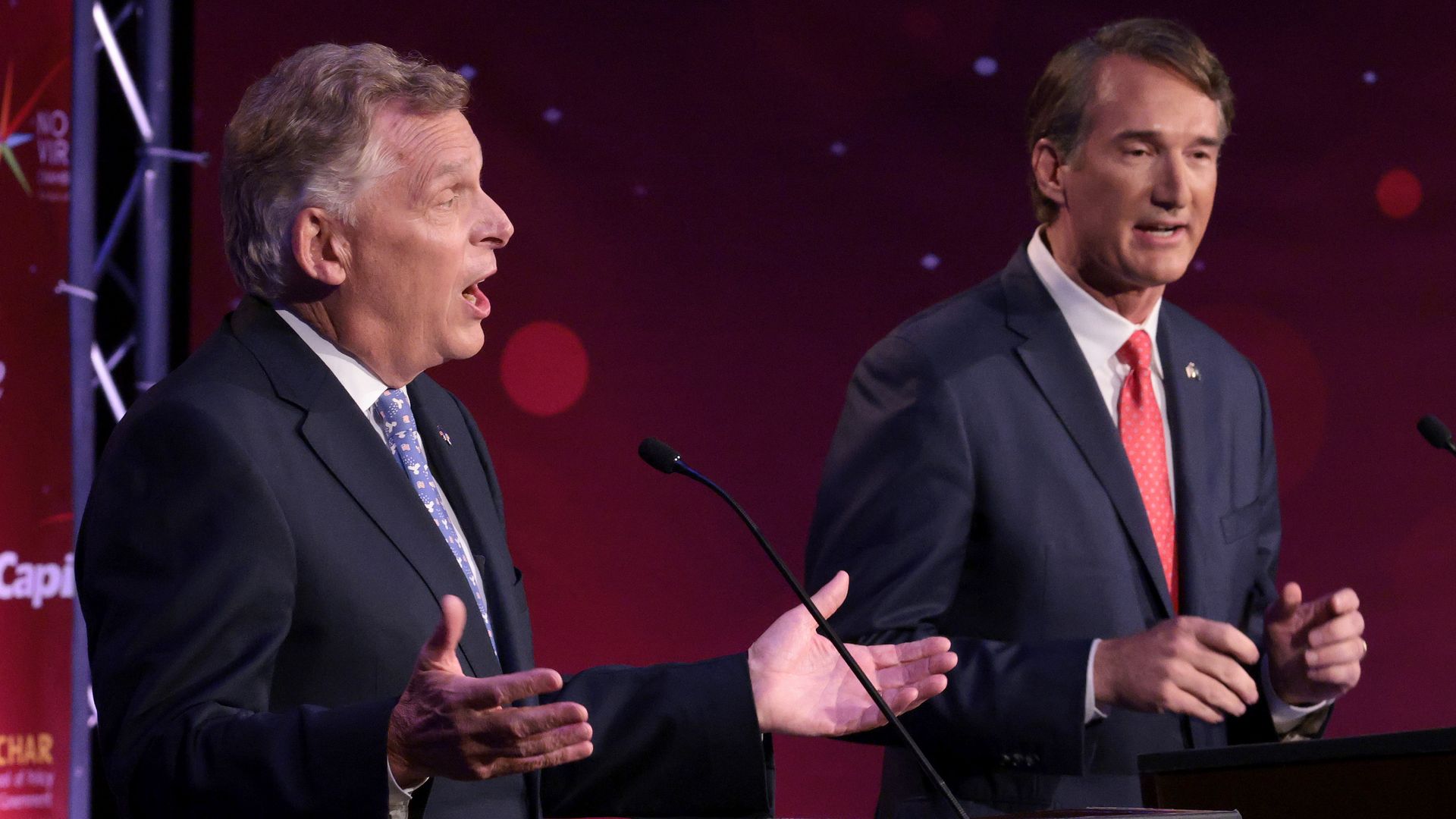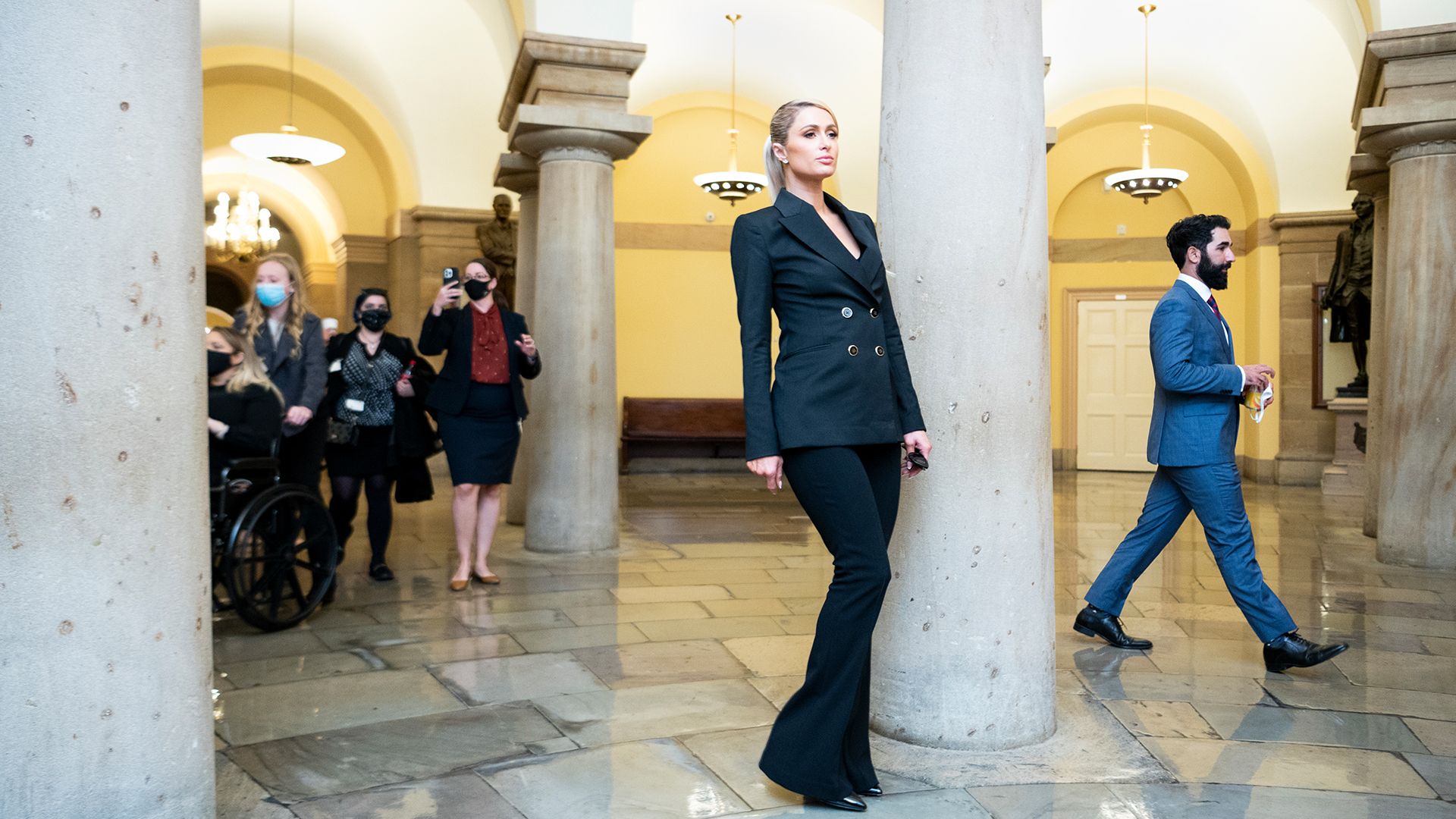| | | | | | | Presented By Climate Power | | | | Axios Sneak Peek | | By the Axios Politics team ·Oct 20, 2021 | | Welcome back to Sneak. 📅 Join Axios' Russell Contreras and Hope King tomorrow at 12:30pm ET for a virtual event about the state of socioeconomic mobility in America. Guests include Maryland gubernatorial candidate Wes Moore (D) and National Domestic Workers Alliance executive director Ai-jen Poo. Register. Smart Brevity™ count: 1,334 words ... 5 minutes. Edited by Glen Johnson. | | | | | | 1 big thing: New gerrymander weapon |  | | | Illustration: Annelise Capossela/Axios | | | | Partisan map-makers are considering not just voter registration but planning and zoning data to decide how new congressional districts can be drawn to help or hurt their candidates not just now but in the future, Axios' Stef Kight reports. Why it matters: High technology and the "big sort" of like-minded voters grouping together can make gerrymandering less conspicuous this year — even if it still exists. What we're hearing: In Texas, Republicans added vacant lots to Democratic districts, expecting them to turn into high-density housing areas over the next decade, David Wasserman of the Cook Political Report told Axios. - That urban-style housing is more likely to attract Democratic voters, so Republicans want to keep them clustered in one place.
- Such nonpolitical analysis also allows parties "to forecast how their gerrymanders will perform over time," he said.
There's also far more open-sourced redistricting platforms this time around, National Republican Redistricting Trust's executive director Adam Kincaid told Axios. - "It creates a volume of maps that are available to the public — and to legislators, if they look at them, and commissioners, if they look at them," he said.
- Joe Kabourek, RepresentUs senior campaign director, told Axios advanced technology has also made it so "partisan actors can slice and dice districts with precision, and outside the sight of voters."
- One sign: an uptick in uncompetitive districts without excessive geographic manipulation.
Yes, but: There's some dispute over just how much technology has advanced since the last redistricting in 2011, and whether it really makes a difference. - Kincaid said it's been overstated, and "the reality is that the technology now is about the same as that technology 10 years ago, and maps have been drawn to be durable for a very long time."
- National Democratic Redistricting Committee president Kelly Ward Burton argued technology could be used to create fairer maps.
- She accused Republicans of "doing the opposite, drawing maps that double down on and preserve the most egregious gerrymanders in the country."
Technology isn't the only reason voters may see fewer strangely shaped districts when redistricting is completed later this year. - Americans are self-sorting — increasingly living near like-minded voters.
- This "big sort" makes it even easier to draw safe, smooth districts, since voters have naturally created politically homogenous communities.
|     | | | | | | 2. Stymied by Sinema |  | | | Photo: Mandel Ngan/Pool/Getty Images | | | | Congressional leaders say Sen. Kyrsten Sinema's (D-Ariz.) potential opposition to any corporate or personal tax increase will complicate — and potentially delay — President Biden's $2 trillion plan to expand the social safety net. Why it matters: If tax hikes are out, lawmakers have to find new revenue streams to pay for child care and other administration priorities. Sinema may not be opposed to some drug pricing reforms or enhanced IRS enforcement, Axios' Hans Nichols has learned. - While an alternative slate of roughly $2 trillion in tax increases — including a proposed billionaires tax — could partially plug the gap, some Democrats are reluctant to rush it through the legislative process.
What they're saying: "Getting the details right on tax policy is really important," Sen. Mark Warner (D-Va.) told Axios. "We could mess some of this up." - "There's a reason why you only do tax policy in a major way every few years," he said.
Driving the news: Lawmakers in both chambers are growing increasingly concerned that even if Sinema and Sen. Joe Manchin (D-W.Va.) can agree to a top-line price tag, Democrats may be just as divided about how to pay for new programs. - Sinema has suggested to lobbyists she's opposed to any corporate or personal tax increase, forcing the Senate Finance Committee to return to the drawing board, the Wall Street Journal reported.
- Negotiators had been counting on more than $800 billion in new revenues by raising the corporate, personal and capital gains rate.
- "There's a lot of mechanisms on the list of potential ways to pay for it," said Sen. Jeff Merkley (D-Ore.). "And there's probably compromises with different members to be made over specific items."
House Way and Means Committee Chairman Richard Neal (D-Mass.) agreed Sinema's opposition makes a final deal "more complicated." - The senator's office declined comment.
By the numbers: The president initially proposed raising the corporate rate to 28% from 21%, but Senate Democrats have been hovering around a compromise 25% rate since April. - Biden also wanted to increase the top individual rate to 39.6% from 37%, and increase the top capital-gains rate to 28% from 20%.
- Negotiators also are looking to pay for some of their spending by allowing Medicare to negotiate drug prices with pharmaceutical companies, raising between $300 billion and $600 billion.
- The White House also estimates the administration can raise up to $700 billion by surging funding into the Internal Revenue Service for tax enforcement.
Keep reading. |     | | | | | | 3. By the numbers: Media masters |  *Hudson resigned from the Mississippi House effective Aug. 30. Data: Quorum; Table: Jacque Schrag/Axios Of the top 15 most active state legislators on Twitter and Facebook this year, four come from Pennsylvania, and Rep. Anna Eskamani (D-Fla.) made both lists, according to data from Quorum reviewed by Stef. Why it matters: As Donald Trump showed, social media has become increasingly important for politicians at all levels to raise their profile and communicate directly with voters. By the numbers: State Sen. David Livingston (R-Ariz.) has tweeted the most by far, with 20,928 tweets and retweets from Jan. 1-Aug. 25. That works out to around 89 Twitter interactions per day. - His tweets usually are about immigration, with hashtags like #bordercrisis, according to Quorum.
- Sen. Linda Stewart (D-Fla.) is the most active state lawmaker on Facebook.
- She posts most often about COVID-19, using hashtags like #washyourhands and #keepyourdistance.
|     | | | | | | A message from Climate Power | | It's time: Congress must pass clean energy tax credits | | |  | | | | It's time to invest in tax credits for clean energy, transform our power sector to achieve 100% clean electricity and invest in disadvantaged communities. Congress, the window to act is closing. We must pass the Build Back Better Act. Learn more. | | | | | | 4. Reading the fundraising tea leaves in Virginia |  | | | Terry McAuliffe (left) and Glenn Youngkin speak during a debate last month. Photo: Win McNamee/Getty Images | | | | Democrat Terry McAuliffe may be trouncing Glenn Youngkin in fundraising, but when it comes to dollars from donors in Virginia — the state where they're battling to become governor — the Republican has the edge, Axios' Alayna Treene and Lachlan Markay report. Why it matters: With tight polls between the two gubernatorial candidates less than two weeks before Election Day, the parties are also looking to fundraising as a predictor of success. - Youngkin's in-state support is a warning sign for the McAuliffe campaign.
- The outcome has national implications, since political leaders — specifically Democrats — view it as a bellwether for how well they'll perform in the 2022 midterms.
By the numbers: Youngkin, a former Carlyle Group co-CEO and multimillionaire, has donated $16.5 million to his campaign. - Setting aside his personal loans to his campaign, he's outraised McAuliffe in Virginia in raw cash contributions by over $549,000 — $14.2 million to $13.6 million, respectively.
- Additionally, a majority (59%) of Youngkin's cash donations are from within Virginia, while a majority (64%) of McAuliffe's are from outside the state.
The backdrop: Recent campaign finance reports show McAuliffe raised $12.6 million in September, compared to Youngkin's $7 million. - Excepting Youngkin's donations to his own campaign, McAuliffe is outraising him by more than $15 million for the year.
- McAuliffe also has received a larger boost from his national party apparatus: the Democratic Governors Association has given his campaign more than $12 million, compared to less than $6 million that the Republican Governors Association gave to Youngkin.
Between the lines: Even within Virginia, the candidates have distinct financial power centers. - McAuliffe has raised far more in Northern Virginia and the D.C. suburbs.
- Youngkin has a clear advantage in the South Hampton Roads region surrounding Norfolk and Virginia Beach.
What they're saying: McAuliffe disputed any fundraising lead for Youngkin during an interview with Axios today. - "I outraised him. Take out his $16 million. Pick that out. I have seven times more donors than he has, and mine are under $35," McAuliffe said.
- Later, in a statement, he added: "We have built the largest grassroots army in Virginia history and I am so proud of my supporters from every corner of the Commonwealth."
- Matt Wolking, a spokesman for Youngkin, told Axios: "On the ground, the race is breaking toward Youngkin and it's not hard to see why."
|     | | | | | | 5. Pic du jour: Original influencer |  | | | Photo: Bill Clark/CQ-Roll Call via Getty Images | | | | Paris Hilton poses for photographers in the U.S. Capitol Crypt. - She was on the Hill to push for legislation establishing a bill of rights for children placed in congregate care facilities.
|     | | | | | | A message from Climate Power | | It's time: Congress must pass clean energy tax credits | | |  | | | | It's time to invest in tax credits for clean energy, transform our power sector to achieve 100% clean electricity and invest in disadvantaged communities. Congress, the window to act is closing. We must pass the Build Back Better Act. Learn more. | | | | 🐫 We made it through another Hump Day! A reminder that your family, friends and colleagues can subscribe to Sneak or any of Axios' other free newsletters through this link. |  | | It'll help you deliver employee communications more effectively. | | | | | | Axios thanks our partners for supporting our newsletters. If you're interested in advertising, learn more here.
Sponsorship has no influence on editorial content. Axios, 3100 Clarendon Blvd, Suite 1300, Arlington VA 22201 | | | You received this email because you signed up for newsletters from Axios.
Change your preferences or unsubscribe here. | | | Was this email forwarded to you?
Sign up now to get Axios in your inbox. | | | | Follow Axios on social media:    | | | | | |










No comments:
Post a Comment